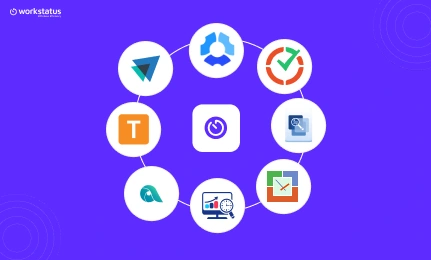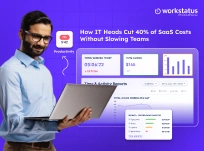Table of Contents
Introduction
In today’s work culture, employees often work in different environments, like
- Offices
- Remote setups
- Hybrid models
Staying productive can be hard in such diverse work settings.
Did You Know?
81% of organizations have reported increased productivity after adopting remote work set-ups.
However, using the right tools can help streamline work, enable collaboration, and improve performance across all environments.
These tools allow teams to excel no matter where they work.
Whether you work remotely, in an office, or a mix of both, these tools will help you stay focused, organized, and connected for smooth operations in any work environment.
Read this blog to learn about the seven tools that will help you optimize performance regardless of your working environment.
Let’s dive in.
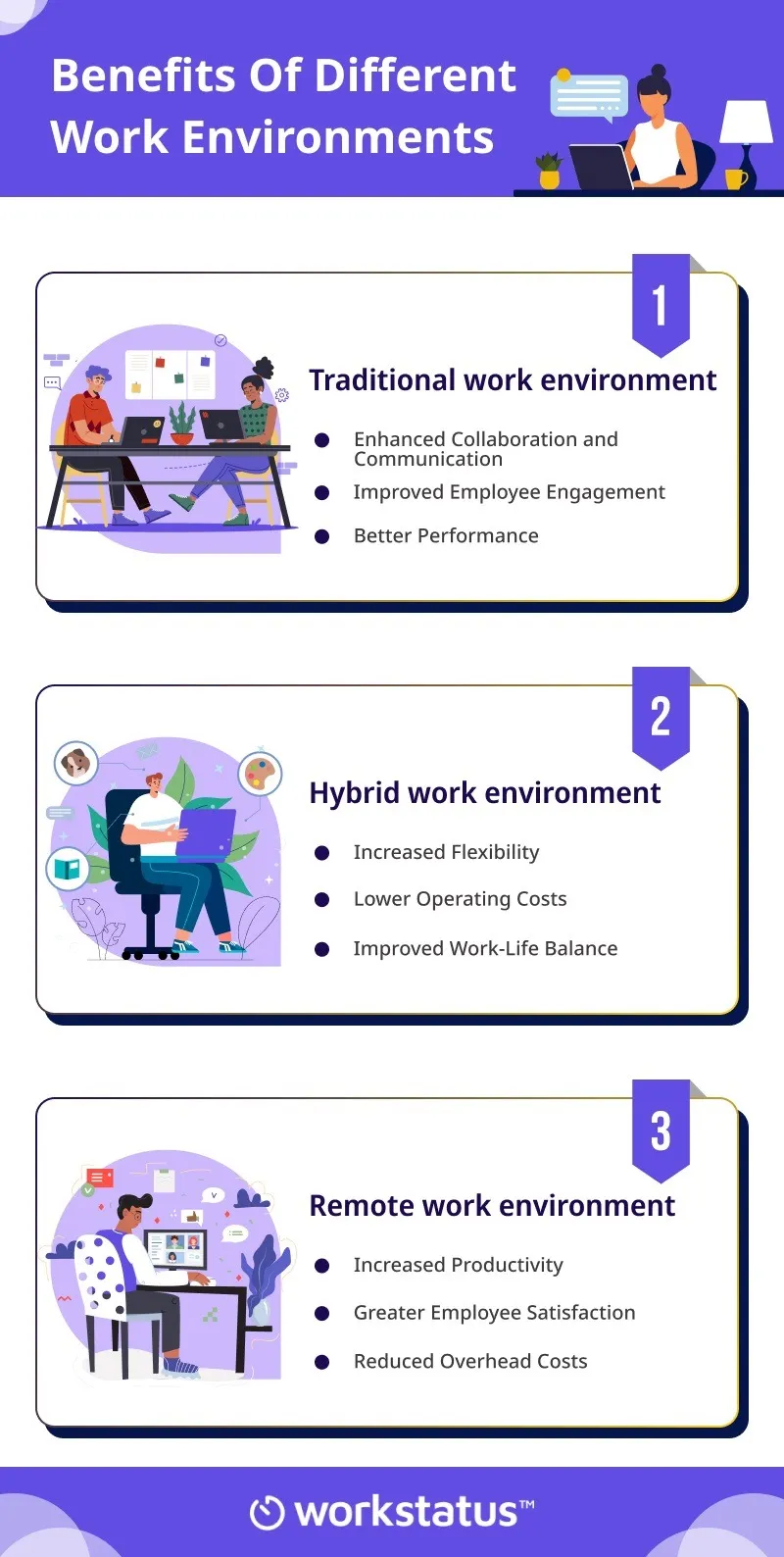
Now let’s take a look at
Navigating Work Cultures: Overcoming Challenges With Workstatus
Traditional Work Environment
A traditional work environment typically refers to a workplace where employees work in a physical office or other designated workspace, during regular business hours.
This type of environment typically includes:
- Hierarchical organizational structure
- Clearly defined roles and responsibilities
- Formal chain of command
Here are the challenges that arise in traditional work environments:
Challenge 1) Difficulty in tracking the time and attendance of a large workforce-
In traditional work environments, tracking the time and attendance of a large workforce can be challenging.
It can be difficult to keep track of:
- Time employees spend on different tasks
- When employees arrive
- When they take breaks
- Idle time
- When they leave for the day
This can lead to
- Inaccurate calculations of hours worked
- Attendance mismanagement
- Inaccurate payroll calculations
Challenge 2) Limited visibility into employee productivity and performance-
In traditional work environments, it can be difficult for employers to clearly understand their employee’s productivity and performance.
This is often due to a lack of tools or systems to track progress and measure success.
Without this visibility, it can be challenging to identify:
- Areas of improvement
- Reward high-performing employees
- Provide feedback to those struggling
Here’s how Workstatus can help:
1) Time and Attendance Tracking
Workstatus’s Time and Attendance tools provide businesses in traditional work environments with a simple way to track their employees’ hours.
The system includes an automatic time tracker that lets you track:
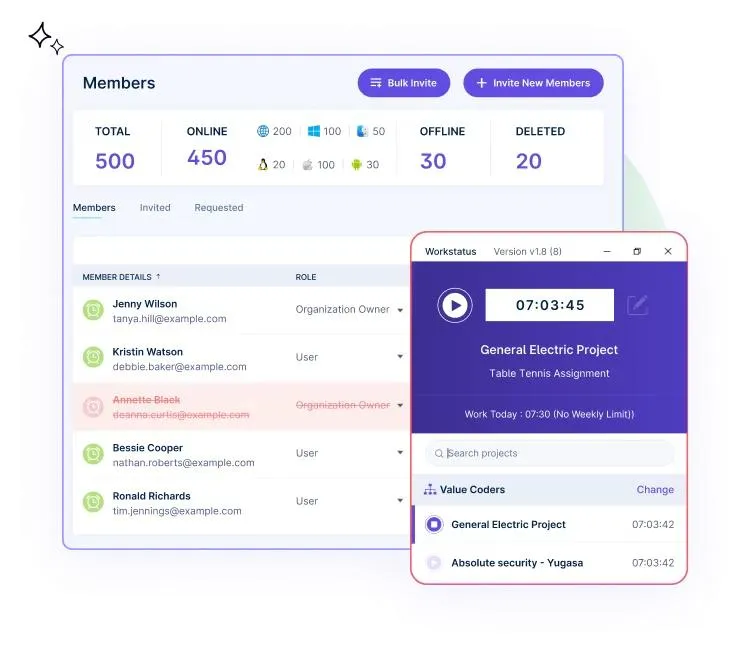
- Total worked hours
- Total time spent on specific tasks
- Total Idle time
That helps companies better understand how their employees spend their time.
The attendance management tool allows employees to:
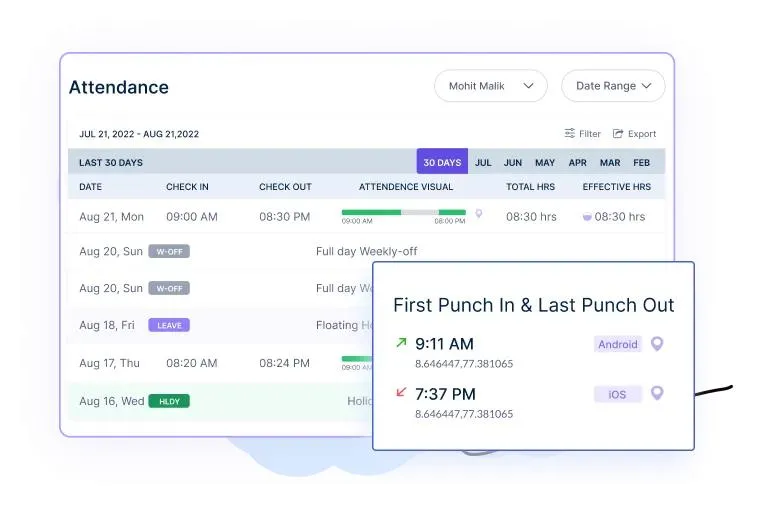
- Clock in – out with the click of a button
- Calculate attendance for payroll
- Maintain accurate records of shift starts, breaks, and finish times
This helps businesses to more accurately:
- Track employee attendance
- Manage payroll
- Ensure compliance with labor laws and regulations
2) Productivity Monitoring
Workstatus’s productivity monitoring tools provide businesses in traditional work environments real-time visibility into their employees’ work.
These tools enable employers to:
- Track employees’ progress on specific tasks
- Total Activity
- Activity Graph
This visibility into employee work helps HR managers:
- Identify improvement areas
- Reward and recognize high performers
- Provide feedback to those who may be struggling
Now let’s understand
Hybrid Work Environments
A hybrid work environment combines working in-office and remotely, where employees have flexible work schedules and locations.
Challenges that arise in hybrid work environments include:
Challenge 1) Schedule Management
Managing schedules can be challenging in a hybrid work environment where employees can work from home or the office.
It can be difficult to:
- Coordinate meetings
- Meets deadlines
- Manage project timelines
When employees are not physically present in the same location.
Challenge 2) Managing split teams
Having divided teams that work in the office and remotely can lead to :
- Disparities in team culture
- Communication gaps
- Unequal access to information
Making it difficult to ensure everyone is on the same page.
Challenge 3) Assigning Tasks and responsibilities
Assigning tasks and responsibilities can be challenging in a hybrid work environment where employees have different work schedules and are in different physical locations leading to:
- Missed deadlines
- Lack of management
- Confusion over roles and responsibilities
Here’s How Workstatus can help
1) Schedule Management
Workstatus’s scheduling feature allows businesses in hybrid work environments to manage and coordinate employee schedules, no matter where they work.
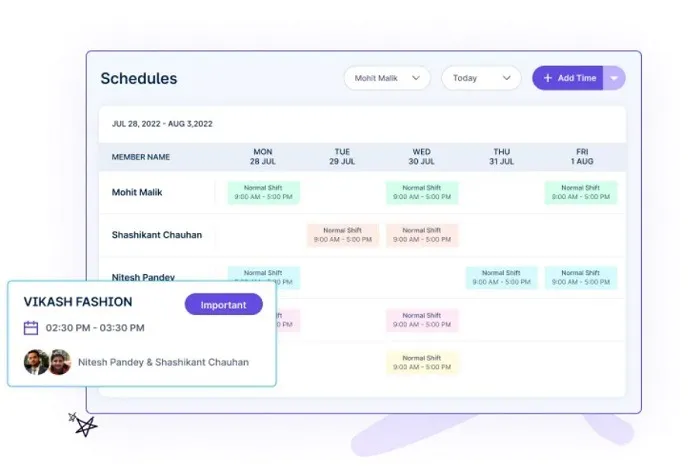
The tool lets you:
- Create and assign tasks
- Set deadlines
- Break projects into milestones
- Ensure deadlines are met
This makes it easier for HR managers to keep teams on track regardless of location or schedule.
2) Workforce Management
Workstatus’s workforce management feature provides businesses with an easy way to manage their split teams in hybrid work environments.
The tool allows you to
- Track
- Measure
- Compare
Employee performance across physical and remote locations.
This helps clarify roles and responsibilities and ensures everyone is on the same page.
3) Task Assignment & Tracking
Workstatus’s task assignment & tracking feature gives businesses in hybrid work environments visibility into their employees’ progress on specific tasks.
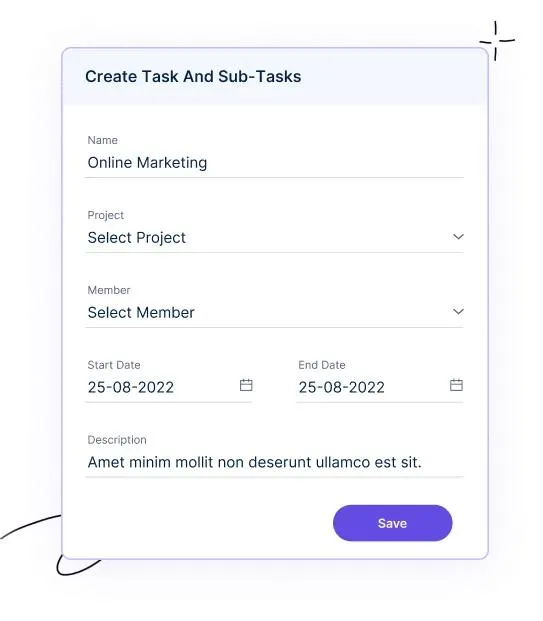
The tool lets you
- Assign tasks to individual team members or groups
- Track real-time progress
- Receive updates when a task is completed
This helps enhance coordination between remote and office-based teams and ensures that deadlines are being met.
As we are now familiar with Traditional Work Environments & Hybrid Work Environments, now let’s take a look at
Remote Work Environments
In a remote work environment, employees work entirely from a remote location, using digital features to collaborate with their team and complete their tasks.
Here are some challenges that arise in remote work environments:
Challenge 1) Tracking real-time employee activity-
Tracking employee activity in a remote work environment can be challenging as employers cannot physically observe their employees.
It can be difficult to
- Track time spent on specific tasks
- Identify distractions or unproductive activities
- Ensure that employees work efficiently during scheduled hours
Challenge 2) Having real-time insights into remote employees’ performance
In a remote work environment, it can be difficult to gain real-time insights into employees’ productivity and performance, as they are not physically present in the office.
This can make it challenging to
- Measure success
- Identify improvement areas
- Provide timely feedback to employees
Here’s How Workstatus can help
1) Activity tracking and screenshots
Workstatus’s activity tracking gives businesses real-time visibility into their employees’ activities.
![]() The tool lets you
The tool lets you
- Track URLs visited
- Monitor the app used
- Capture real-time screenshots of operations
Which helps employers better understand their employees’ performance & operations.
2) AI-powered Reports
Workstatus’s AI-powered reports give businesses real-time insights into employees’ activities and productivity. The tool includes reports such as
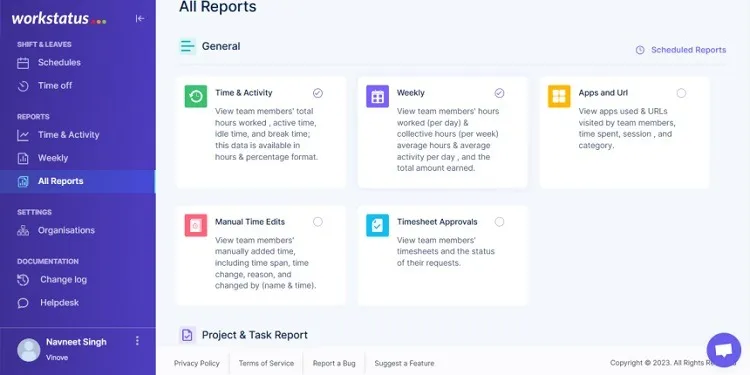
- Time & Activity
- Weekly
- Apps and Url
- Timesheet Approvals
- Project & Todo
- Attendance Report
- Project & Todo
Allow employers to track progress, measure performance, and make data-driven decisions for the betterment of workflow.
So this is how these tools offered by Workstatus can help businesses working in different work environments achieve better results and optimize their performance.
Through these tools, businesses can track & monitor employee activity, get insights into performance and ensure the successful completion of tasks.
Next Step
In conclusion, Workstatus provides a comprehensive suite of tools that can help organizations of all sizes optimize their performance across different work environments.

From time tracking and project management to employee monitoring and invoicing, Workstatus’s tools allow managers to gain insights into how their team works and identify improvement areas.
Whether you’re running a remote team or managing an office-based workforce, Workstatus’s tools can help you :
- Streamline your operations
- Improve productivity
- Boost your bottom line
So why not try Workstatus today and see how it can help take your business to the next level?
FAQs
Q: How can Workstatus help optimize performance across different work environments?
A: Workstatus provides real-time visibility into
- Employee activity levels
- Time spent on different tasks
- App and website usage
This information can help businesses identify areas where employees may be struggling and provide support and resources to improve performance.
Q: Is Workstatus suitable for all types of businesses?
A: Workstatus is designed for businesses of all sizes and types, including
- Remote teams
- Freelancers
- In-office teams
It can be used by any business that needs to track time, monitor employee productivity, and manage projects.
Q: Can Workstatus be integrated with other tools?
A: Yes, Workstatus can be integrated with a variety of other tools, including
- Project management software
- Invoicing tools
- Payroll systems
This integration makes it easy to streamline business operations and automate tasks.




